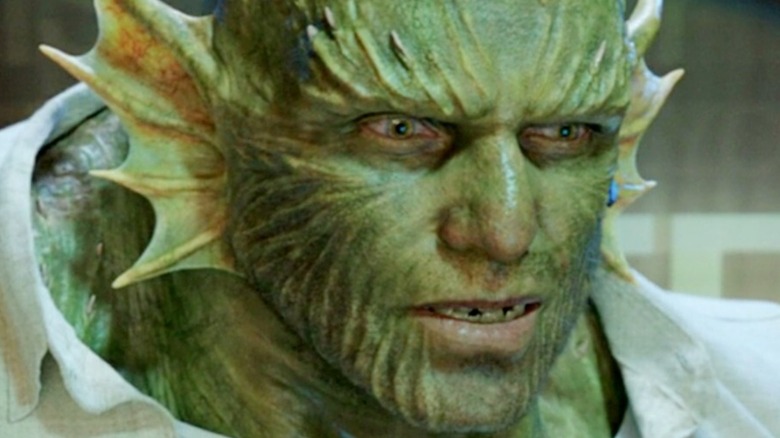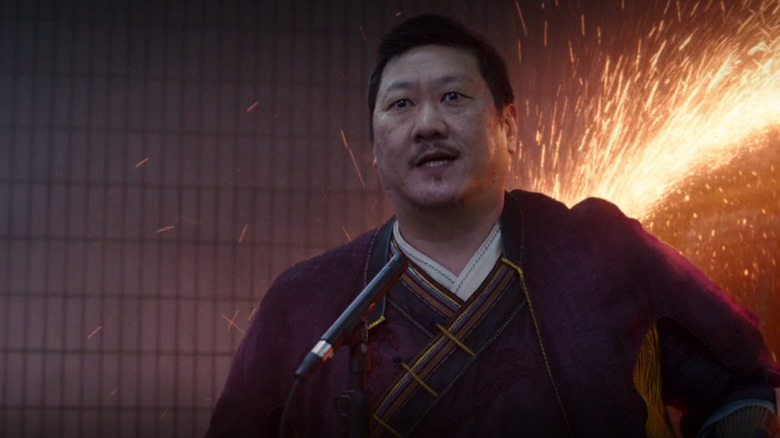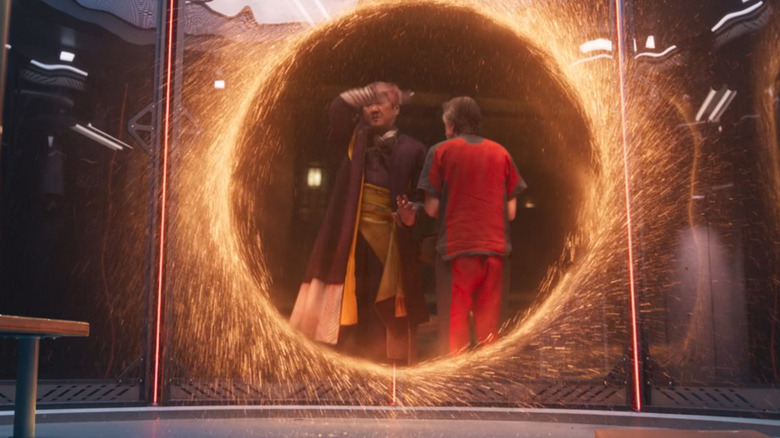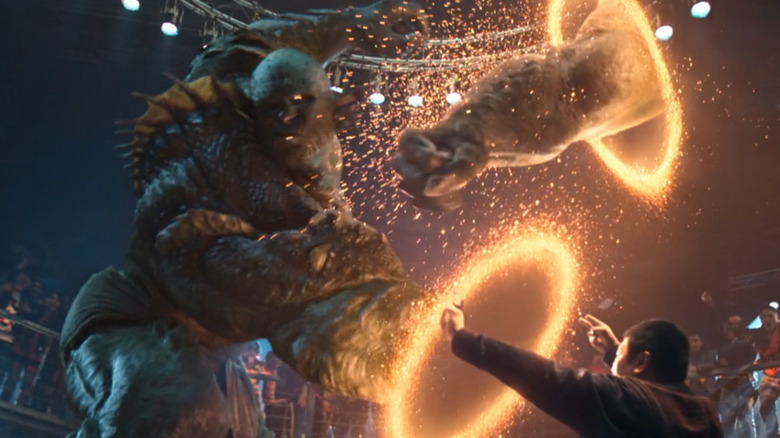The She-Hulk Finale Post-Credits Scene Explained
"She-Hulk: Attorney at Law" wastes no time in utilizing the vast powerhouse that is the Marvel Cinematic Universe. Throughout the nine-episode series, "She-Hulk" brings in several characters and references from the MCU, placing them directly in the path of the fourth-wall breaking Jennifer Walters (Tatiana Maslany). After the first episode explored the relationship between Jen and her cousin, Bruce "Hulk" Banner (Mark Ruffalo), fans got a chance to see Sorcerer Supreme Wong (Benedict Wong), Emil "Abomination" Blonsky (Tim Roth), Daredevil (Charlie Cox), and even several references to New Asgard, Thor, and the love life of Captain America (Chris Evans). In other words, "She-Hulk" is acutely aware of its position in a greater narrative.
With the finale of "She-Hulk," several new elements have been introduced that could be laying the groundwork for future MCU movies and TV series. Perhaps the greatest shocker in "She-Hulk," though, is the introduction of Hulk's son Skaar (Wil Deusner), which some fans believe may be setting up a "World War Hulk" movie. Of course, in the Marvel tradition, the finale features a post-credit scene which raises particular questions about the future of some fan-favorite characters.
Abomination admits his crime in the finale of She-Hulk
Although "She-Hulk: Attorney at Law" sets up a battle among She-Hulk, Hulk, Abomination, a transformed Todd Phelps (Jon Bass), and Titania (Jameela Jamil), She-Hulk uses her ability to break the fourth wall and enters into our reality, where she demands to see "Kevin," which is a direct call-out to Marvel Studios honcho Kevin Feige. After finding out that Kevin is actually an artificial intelligence, she calls for changes that will hold people accountable for their actions. This causes the brewing epic battle to be completely tossed out, and instead both Todd and Emil are arrested — Todd for hacking Jen's computer and phone, and Emil for breaking the terms of his parole.
Considering Emil Blonsky's new outlook on life and general Zen demeanor, he accepts his responsibility and his punishment of 10 years in prison. However, the end credits stinger in the "She-Hulk" finale shows Wong once again using his sling-ring to open a portal into Emil's glass prison, prompting Emil to ask if they have Wi-Fi in Kamar-Taj as they step through the portal. So what is Wong's motivation?
The friendship between Wong and Blonsky
One reason for Wong's continuing efforts to break Emil Blonsky out of prison, even though he was admonished for this act in the third episode of "She-Hulk," could be that Wong and Blonsky are actually friends. In the third episode, Wong appears on behalf of Blonsky during his parole hearing. The authorities want to know why and how Blonsky escaped, and Wong explains that he did it, and even though Wong offered Blonsky sanctuary, Blonsky turns this offer down in order to show that he's reformed and wants to be a benefit to society, not a monster.
At this point, the authorities point out that Wong committed a crime by letting Blonsky go free for a time, which causes Wong to immediately declare that he must leave, and he disappears into a portal. We know that Wong is popular around the MCU, whether he's palling around on karaoke night with Shang-Chi or staying in to binge "The Sopranos" with fan-favorite Madisynn (Patty Guggenheim). Wong may consider Emil Blonsky an actual friend, and since Blonsky is only being sent back to prison for a parole violation, Wong couldn't let him lose a decade of his life. However, there could be another reason why Wong decided to spring Blonsky again, and it might have to do with their shared appearance in "Shang-Chi and the Legend of the Ten Rings."
Wong may need Abomination for training other magical students
Prior to "She-Hulk," the Abomination's last MCU appearance came with a cameo in "Shang-Chi and the Legend of the Ten Rings." As "She-Hulk" reveals, that movie's cage fight between Wong and Abomination was part of Wong's training. Wong required a worthy foe, and Abomination happened to fit the bill. There's no animosity between the two, as highlighted by "She-Hulk" and its finale scene, so it could be that Wong is simply thankful for Emil's efforts in this department, or it could be that Wong has the intention of using Abomination in the training of other students at Kamar-Taj. He could also be making good on his original offer of sanctuary, because it's probably hard to get somebody extradited from such a distant location so awash in magical energy. Or perhaps there's even a chance for a future TV show centered on Wong and his who's who of superfriends.
For his part, Benedict Wong has made it clear he loves playing the character. "I'm just enjoying playing this role and where it takes me," he told The Hollywood Reporter. "In every single kind of project that they invite me to be involved in, it just pulls away another layer of the onion, you know? You get to find a little bit more about the eccentricities of the Sorcerer Supreme." Being one of the strongest magic users on the planet probably has the side effect of making one a little reckless, but at least we know that "Wongers" has quite a few friends in the MCU who've got his back. Now Marvel fans just need to sit back, breathe deep, and await the next appearance of the Abomination and the Sorcerer Supreme.



